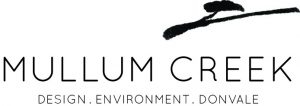Landscape design
A key objective for Mullum Creek is to maintain an open rural landscape setting, with strong connections to remnant ecological and historical features of the area.
The following guides and external references will assist with the landscape design process, towards achieving outcomes that integrate seamlessly with the landform, textures and colours of the existing natural bushland.
These documents should be read in conjunction with Section 7 of the Mullum Creek Design Guidelines.
Mullum Creek is urging:
- Integration of indoor and outdoor spaces through complementary architectural and landscape design.
- Front yard design that complements the public reserve areas, contribute to a cohesive streetscape and blends with the natural environment.
- Natural landforms and soil profiles that are minimally impacted by excessive cut and fill, erosion and soil loss.
- The use of landscaping materials such as soil, rock and gravel that occur naturally on or as close as possible to the site.
- Utilisation of rainfall and on-site infiltration, rather than drawing upon mains water.
- The use of locally indigenous plant species on private allotments, consistent with vegetation communities occurring naturally in the vicinity.
- Judicious planting that avoids potential overlooking across neighbouring lots.
- Careful selection and placement of trees and shrubs, to preserve good solar access for, and so optimise performance of, windows and rooftop photovoltaics.
- Reduction in fire hazard through the planting of fire-resistant vegetation on homesites.
- Establishment of productive food gardens and plants on allotments.
External links and references
Landscaping and Garden Design
Your Home
Weeds Identification Booklet
Manningham City Council
Native Splendour, Indigenous Plants
Manningham City Council
Landscaping for Bushfire
Country Fire Authority



